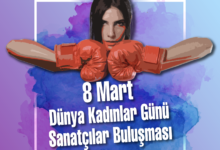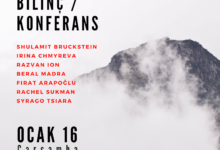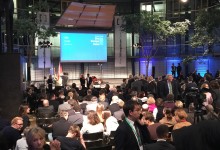25 NOVEMBER, 2013 ISTANBUL BILGI UNİVERSITY “THURSDAY TALKS” WITH VITTORIO URBANI
We are Biennale Friends; we met two decades ago on the occasion of VB.
We have a heavy memory and experience of how to be visible in a mainstream biennale within a merciless competition.
We have the power to go on making projects in biennale despite all the obstacles we know we will get involved in another biennale.
I confess that I am a Biennale addict curator (1st-2nd İstanbul Biennale, 5 Pavilion of Turkey in Venice Biennale, 1 Central Asia Pavilion, 1 Azerbaijan Pavilion, Sinopale, 3rd çanakkale Biennale)expression and free individual political positioning in the Modernist nation-state and not to forget fascist political environment.
I have written numerous critical essays on biennale which ended up in a book.
2011 I have contributed to the Biennale edition of IKSV and I promised myself to speak and write about istanbul Biennale for the last time.
What am I doing again? Speaking with you about Biennale!
WHAT IS VENICE BIENNALE FOR THE GLOBAL ART WORLD?
The oldest great exhibition of the world; has unshakeable legitimacy.
still representing the power of EU in global culture, despite the ongoing culture hegemony of USA.
since 20 years it has become a paradise for the contemporary art scenes of the former peripheral countries more than other biennale it presents a fertile background for art fairs
as it is mainly supported by states and governments the pavilions are public supported contemporary art spaces where many artists can fullfil their dreams.
İt is also supported by sponsors as it is the most glorious platform for PR; even TR sponsors have used to support contemporary art productions through biennale.
VB is the most significant contemporary event for Italy and the primary model for its culture industry.
VB is being negatively criticised:
on its neo-capitalistic management structure;
on its Eurocentric policy;
on its relations to the local art scene;
on its highly burocratic logistics;
on its undercover relations to collectors, dealers, fairs and not to forget to EU culture policies.
WHAT IS ISTANBUL BIENNALE FOR TURKEY
At the beginning a passage from stagnated Modernist art production to Post-modern plurality of production.
At the beginning a door to free expression and individual political positioning for art production.
At the beginning the birth of sponsoring, art market moevements, networking and integration to culture industries of the so called Western world.
During 90’s the integration was developed with the presence of foreign curators and the interest of foreign culture institutions.
During 90’s İB was a motivation for the local art scene and the contemporary art production gained its identity and self-confidence in competition to the global artworks displayed
90’s for Turkey was a violent political and social period (PKK war; economic depressions etc.) .
During to 2000 İB became a culture industry tool.
Sponsors and logistic sectors profited; only artists who could make good relations with the foundation and the sponsors were represented. Foreign institutions and curators have influenced the selection of curators and artists.
Within the context and practice of culture industry of our region where the art is not an authonomous issue but mainly reckoned as a showcase of many other particulars this could be expected.
Even if there are always dissident art works, questioning and scrutinizing the political and social atrocities and scandals in the showcase, the foreign and local press and media, the institutions and investors of these events love the immaculate and the sheltered image and tried to divert the attention of the public to the so called “positive review”.
The list of misconduct in the art scenes of the world is quite long.
The most harmful among them are the new-structuring within the conditions of global capitalism when the art institutions, curators, and the artists become decisively dependent on private sector initiatives. Somehow the control and manipulation of these initiatives on the galleries, curators and cultural events are beyond reason and ethics.
The other harmful conduct is, whether conscious or unconscious, the amazing insistence of the powerful culture initiatives of AB and USA capitals on colonialist habits. It is currently manifested in AB cultural policies which clearly export their systems, strategies and productions through funds, projects and programming to the still undeveloped culture industry territories and in turn import their sources of inspiration.
Under the spell of this positive thinking, the curators and critics, who generally are frustrated of the market tactics and official policy manipulations, talk at random about the independency and difference of the Istanbul Biennale, and experience some kind of ease, expansion and hope. They think that there is no market strategies here, the artists and curators can produce in a relatively free and independent atmosphere. They would never admit that the artists and curators have to struggle under the pressure of weak market and infrasturucture conditions, under restrictions, injustice, monopolies and disinterests of the public.
PROPOSALS FOR A BETTER BIENNALE
General opinion or diagnosis: Within the neo-capitalist system Art works are cultural goods;therefore exposed to market values and manipulations. Artists cannot escape being producers of respectable goods for the buyers;therefore they cannot be as free as they imagine. Biennale are platforms of presentation of artists and art works to the global art market. Within the biennale system there are multiple interest groups and actors: Foundations, state fund systems, Sponsoring sytems, curators, art critics, publishers, gallerists, dealers, artfair companies, designers, technicians, transport and insurance companies, catering companies, NGO’s, volunteers, interns, universities etc.
All these systems, companies and actors are dependend on what?
Artist as a producer of art works; without the artists there is no production.
What is the paradigm of today’s contemporary art production? What are the conditions of being a acceptable art work within the current aesthetic and critical theory?
Relational aesthetics, freedom of expression, political position, philosophical-anthropological-sociological-technical knowledge and experience, flexibility of changing strategies according to the socio-political and economic developments, power to be dissident and revolutionary…
These are expected from the artist, curator and the art critic; whereas the global art market is not in tune with this paradigm; it has its own paradigm, namely consumption, financial manipulation and limitless profit.
This is the discrepancy between the function of the artist and the function of the global art market.
Biennale has to face this discrepancy. It is not realistic to say that biennale should be immune to this complexity.
How can a biennale create a balance between these extremes?
Financial sources: A pool consisting of public and private money and this budget should be see-through; announced openly.
Distribution of financial sources: Artist fee and production costs should be the primary consideration of the distribution.
Curatorial policy: A leading curator should work with a team of curators from different contexts. The curator should be selected for his/her project, which deals with the issues in our region and in the global art scene.
Artists: Artists should not be invited to send projects; as the curators never evaluate these projects. Co-curating system is enough to make of groups of artists from different contexts. Selected artists should have the possibility to discuss the concept, the budget and the exhibition design.







